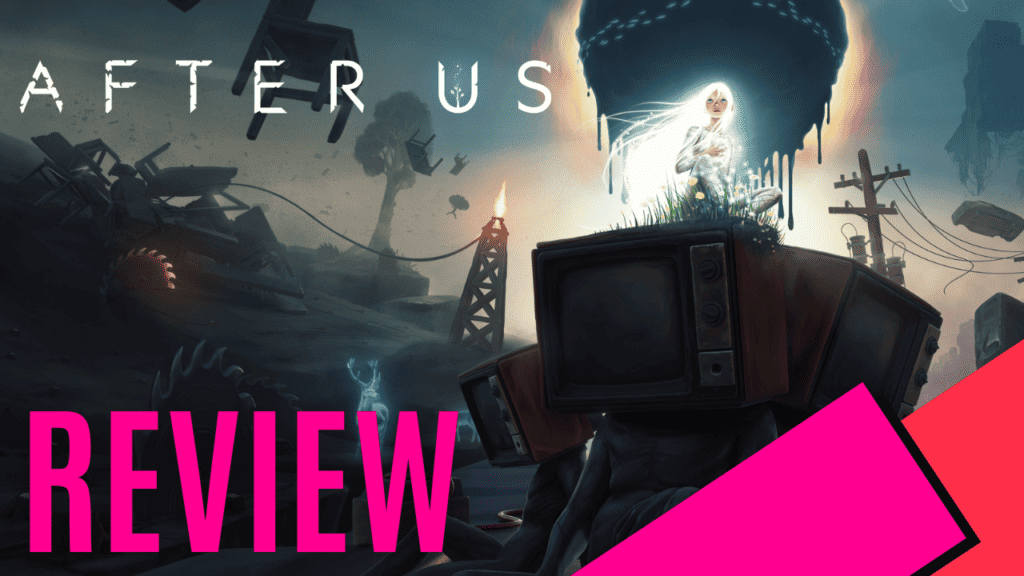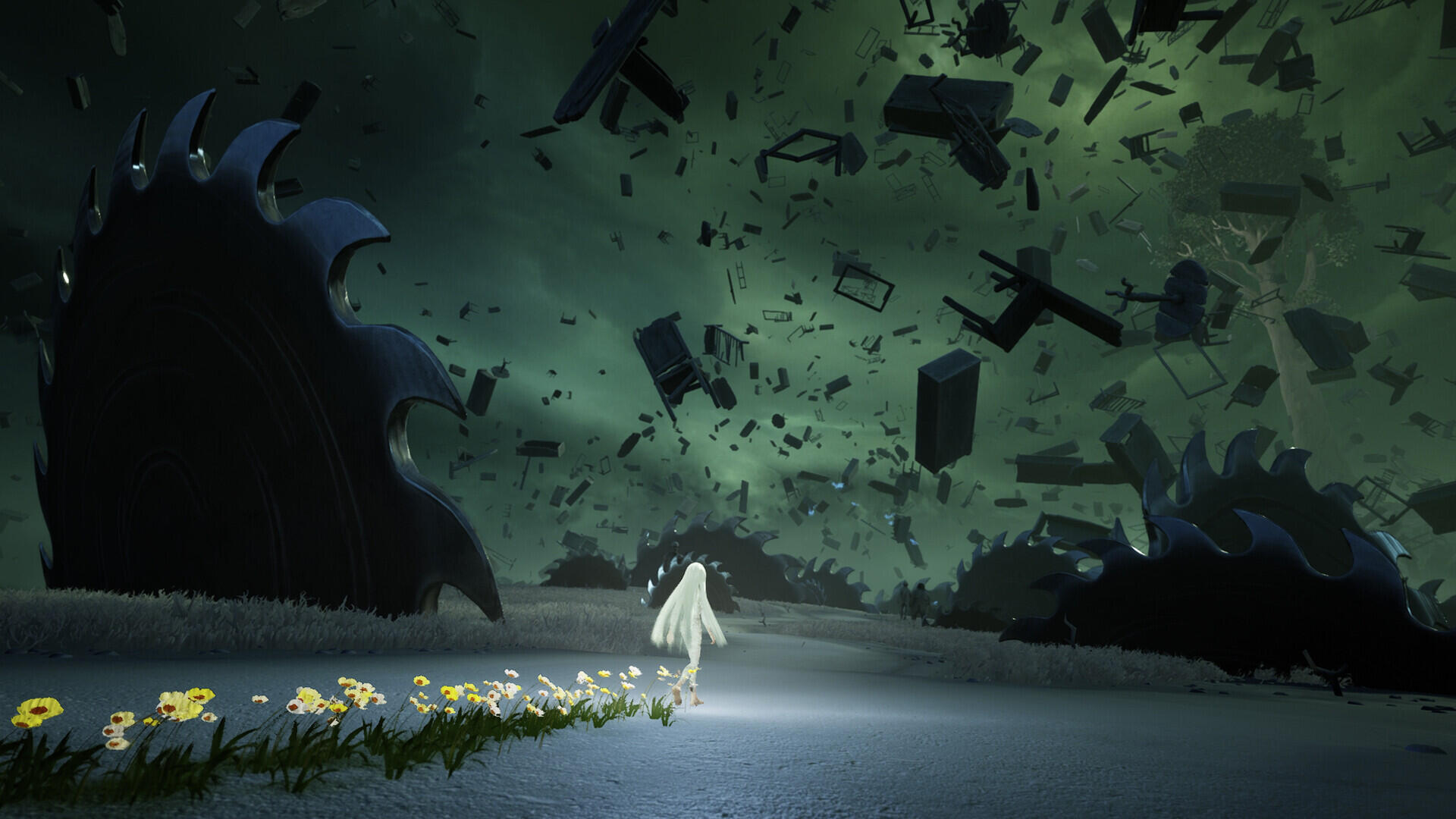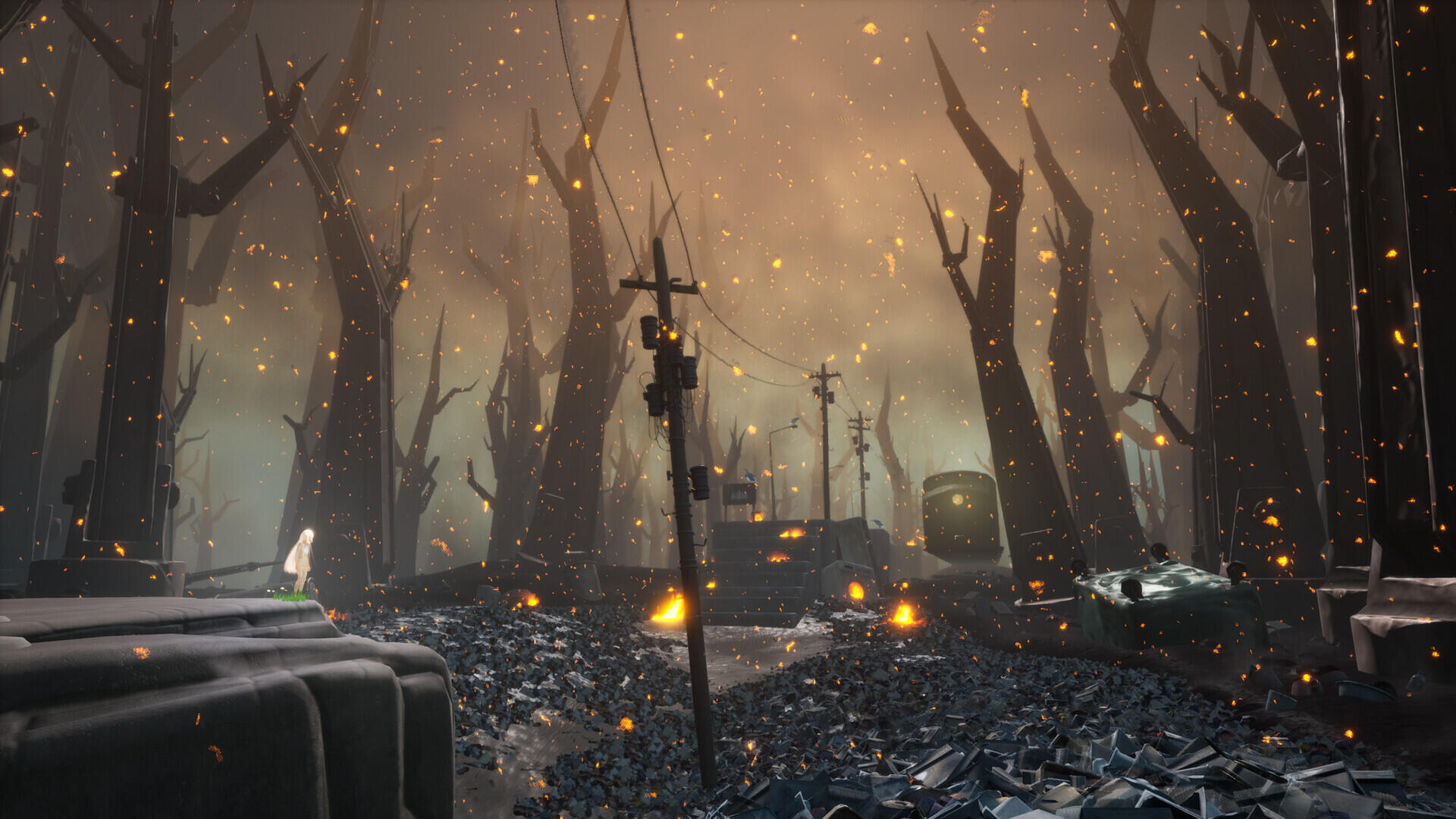
Cosy games have always been a great way to unwind and enjoy the art of video games. The beauty of these games comes in the sometimes simplicity of the gameplay yet often can convey a broad range of lasting emotions. Piccolo Studios alongside publisher Private Division have come together for their new game ‘After Us’ on the PS5, an adventure platformer title that will release on current-gen-only platforms.
The opening moments of After Us introduces us to the playable character Gaia awakened by the inhabitants of a dreamlike sanctuary. The tall swaying grass in the wind dances around the plethora of animals as they chase each other around. Above the trees, impossible set pieces are played out with Whales and other sea creatures floating through the air and a warm glow emanates from the central location. As gorgeous as it was, the elated sensation was just as quickly expunged as the sprites were whisked away, leaving Gaia alone.
There were no full-spoken words and minimal text-based narrative, but the world-building was ready to do the heavy lifting. Leaving the lush and colourful sanctuary, you find yourself in a bleak and ruined surreal depiction of Earth. Rusted-out cars and broken scenery were left floating in place which created the platforming experience for you to progress through the world. It wasn’t exactly clear how or why the world was the way it was, yet the mystery drives the exploration with a need to know more.

As the environmental storytelling elements go, the music was essentially its own character. The sorrow-filled tones poked and prodded at your emotions as you traverse the ruins of humanity. They would harmonise well with Gaia’s own ability to sing in a warm humming nature. Her voice would cause the animal spirits to glow and light up their silhouettes in response, which was more of an optional feature, but one that brightened up the mood in the grim world.
The control scheme felt very natural with the fluid and gliding movements accentuating the liveliness of Gaia compared to the run-down and dreary landscape. Flowers blossomed at her feet as she ran forth by holding ‘R2’ and white whisps glowed around her as she double jumped and then held ‘X’ to glide to the next platform.
The best feature though was found by holding down ‘L2’ and a burst of nature extends out around Gaia that can clear out oil-type filth blockages and cause sprouts to blossom into full-grown trees. This same mechanic can be used to stun the devourer enemies as well, which leaves them open to an orb blast triggered by tapping LB.

The simplistic design made focusing on the jumping puzzles a series of small victories as you collected lost spirits. The platforming sections improved the further you ventured, with general platforming evolving to puzzle solving, planning and good timing. The gradual introduction of the devourer introduces a cat-and-mouse chase element that could be handled in multiple ways to help round out the experience.
The storytelling of the devourers though was the main takeaway, as their part in all of this had caused the world to be in the shambles that we found it in. A truly gut-punching discovery at the end of the first area rammed home the importance of Gaia’s journey and was a promising narrative to follow.
After Us is beautiful sadness that begs to be explored and the steady incline from cosy forests to navigating the worlds and the devourer’s flowed so well. Returning to the Ark, the lush environment we started our journey was truly a breath of fresh air. I loved the contrast between the areas and the next step in my journey was up to me once I reached a branching path in the linear world. I do love my cosy games, and this reminded me of triumphs such as ‘Journey’ and ‘Rime’ which places After Us in great company.

The Good
- Music helped shape the world building
- Intuitive control scheme
- Increasingly engaging puzzles
- Important messages in the story telling
The Bad
- Slow start








